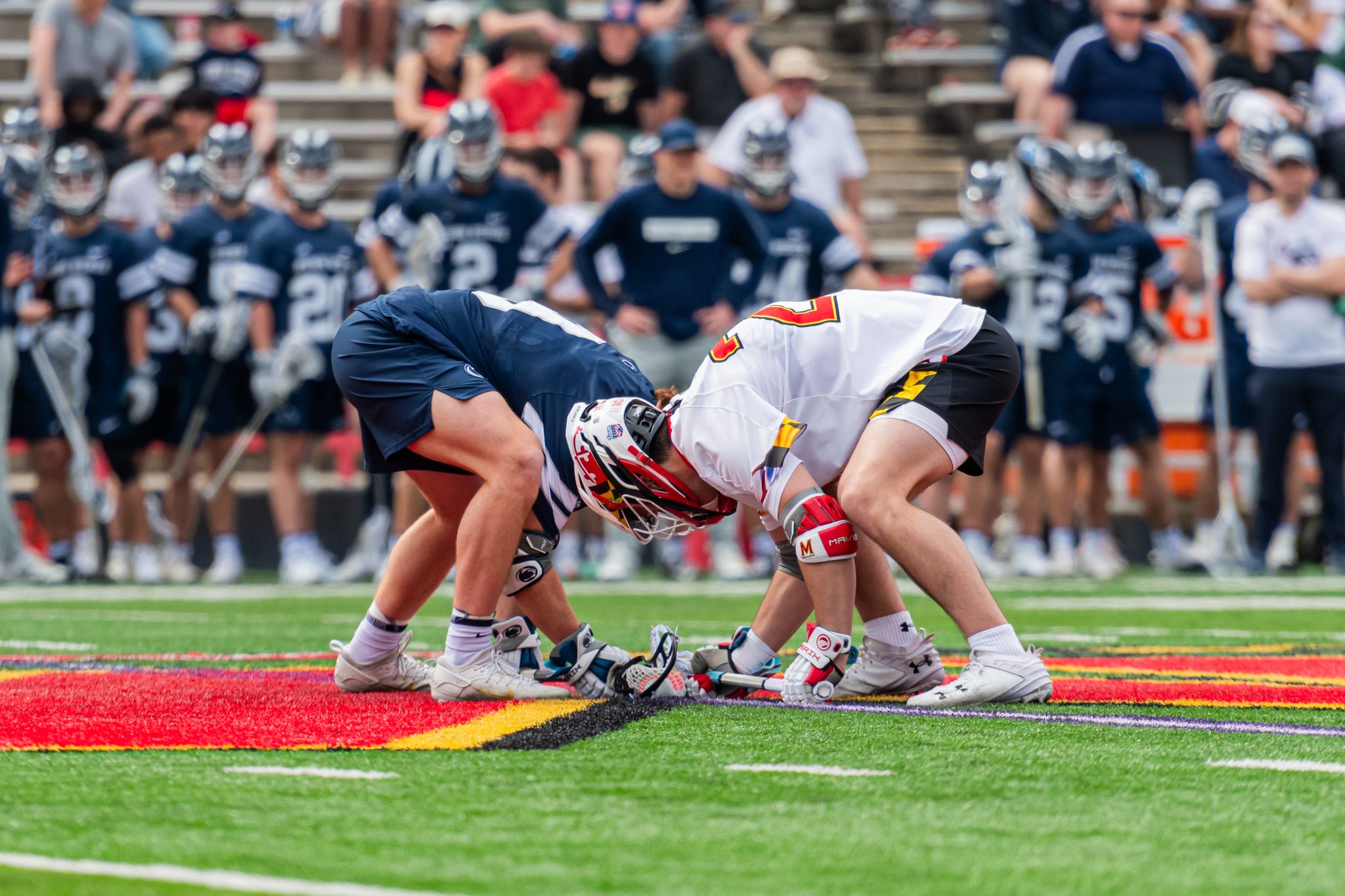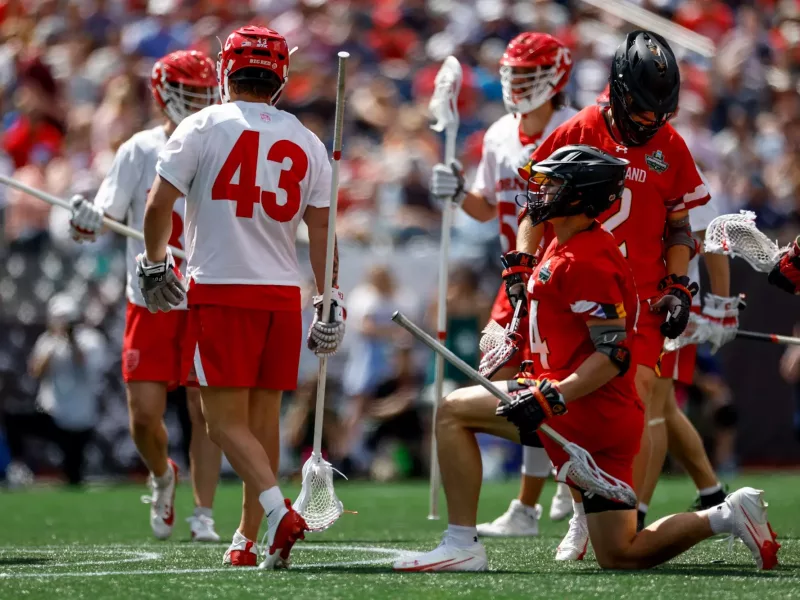No. 6 Maryland men’s lacrosse allowed goals in consecutive possessions against Rutgers last weekend. The Terps were desperate to give their reeling defense a chance to recuperate.
But freshman Jonah Carrier was called for a faceoff violation, leading to another Scarlet Knight score to extend a lead they never relinquished. The infraction left Carrier ineligible to participate in the next clash at the X, part of new rules for the position.
Starting this season, if a player commits a faceoff violation, they become ineligible to participate in the next. Another rule forces officials to move away from the faceoff zone before whistling to start play. Both guidelines aim to encourage strategy for each faceoff taken.
“This holds guys accountable, makes it more of a truer faceoff,” senior faceoff specialist Shea Keethler said. “I’ve enjoyed it, I think it’s been better than my previous three years.”
Maryland coach John Tillman was the chair of the NCAA men’s lacrosse rules committee until August 2024 and played a leading role in implementing changes. Through surveys and talks, he found that many people wanted more discrepancy in faceoff battles.
[No. 2 Maryland men’s lacrosse’s lengthy droughts led to loss against unranked Rutgers]
When officials initiate faceoffs more randomly rather than hovering around the ball and starting them within a short span, anticipation becomes tougher. Players previously risked leaving early in an attempt to start fast breaks, Tillman said.
“We would like to have some variance, because the face off guys … their feeling was the variance is an advantage to somebody that is disciplined on the whistle,” Tillman said. “If you don’t vary it and you just go down and blow it, you don’t have to be the greatest faceoff guy.”
Between 2020 and 2024, the NCAA instilled a 30-second penalty for teams that commit three faceoff violations in a half. Tillman called it “double jeopardy”, as schools lost possession on the final infraction and also went a man down. The rule was especially damaging to players who struggled in faceoffs, he said.
But skilled teams were complacent with potential early movement infractions, with the possibility of quick goals after a faceoff, the coach said. Tillman referenced former Virginia faceoff specialist Petey LaSalla as someone who excelled under the old guidelines.
“He was great with the old rules, I’m sure he would have been really good with the rules we have now,” Tillman said. “[The 30-second penalty] made it even better because even if you took a couple violations, all you’re doing is giving up the ball.”
[No. 2 Maryland men’s lacrosse endures season-worst offensive outing in 8-6 loss to Rutgers]
LaSalla had 11 points across his first two seasons before totaling 40 from 2020 to 2022. Former Maryland All-American Luke Wierman also thrived, notching 32 points across the last four seasons.
Tillman expects fewer breakaways from faceoffs with harsher punishments for miscues. The Terps’ faceoff wins have resulted in only three points this season, rarely leading attacks against unset defenses.
Maryland’s offense has endured struggles without consistent transition goals, including performances of 10 or fewer goals in two of its last three games. Both outings resulted in losses.
The Terps similarly had offensive woes last season, but Wierman scored four of his five total goals during the final month to lead them to the national championship. Maryland may need to take faceoff risks over the rest of the year — even with the new rules — to secure a deep postseason appearance.



